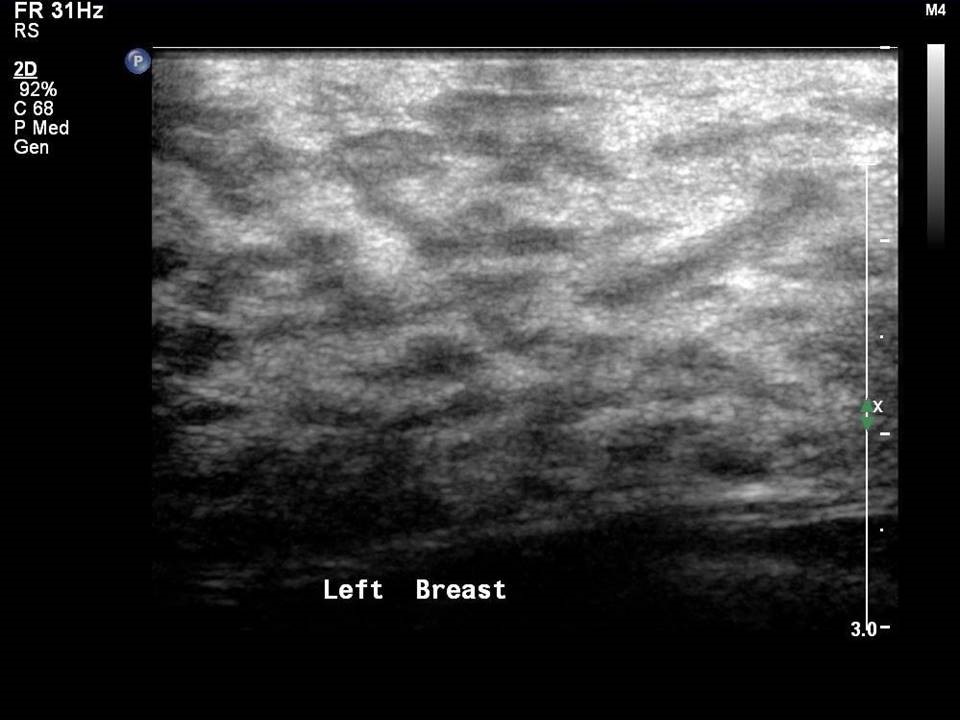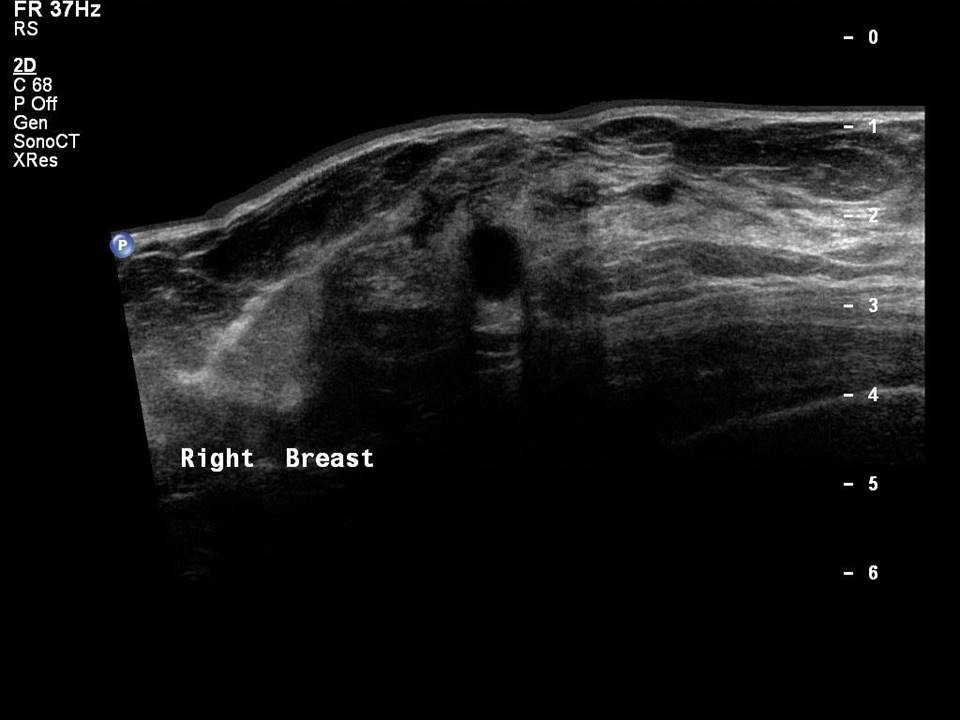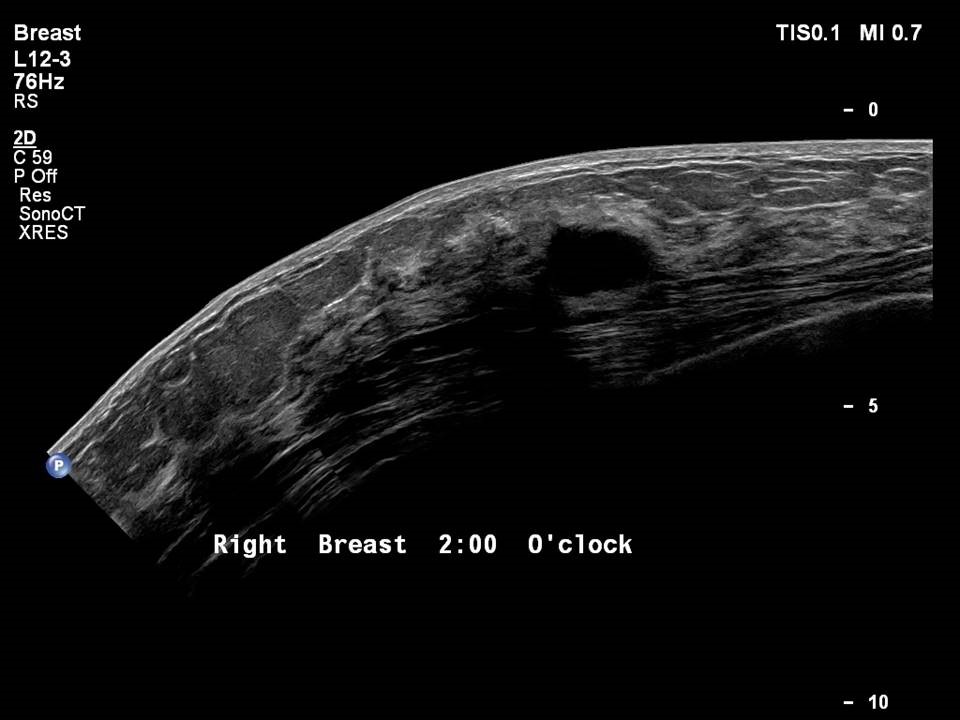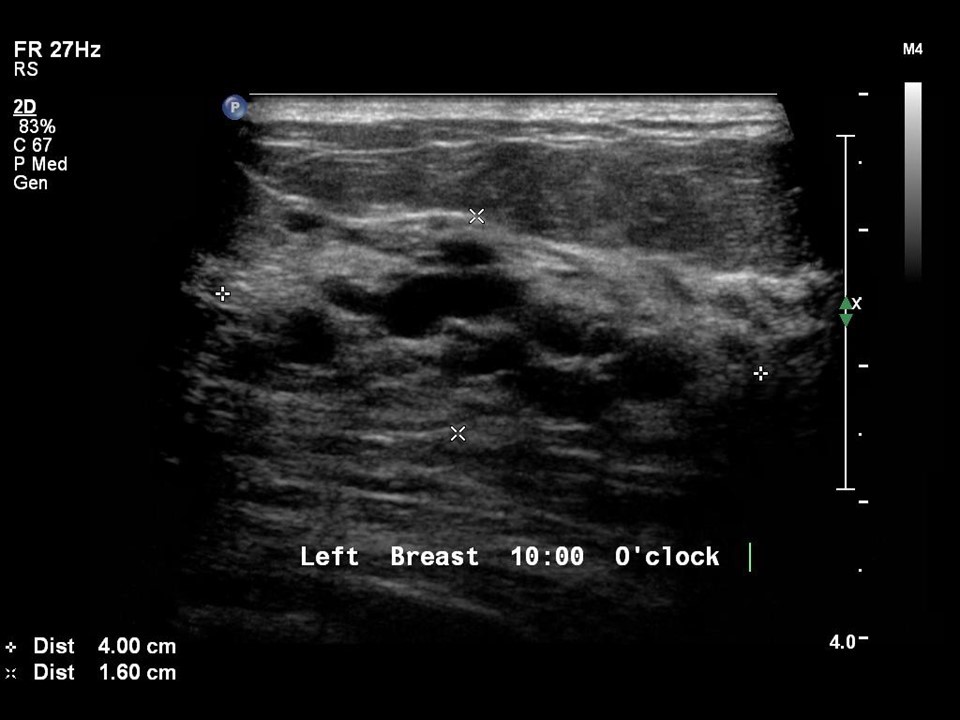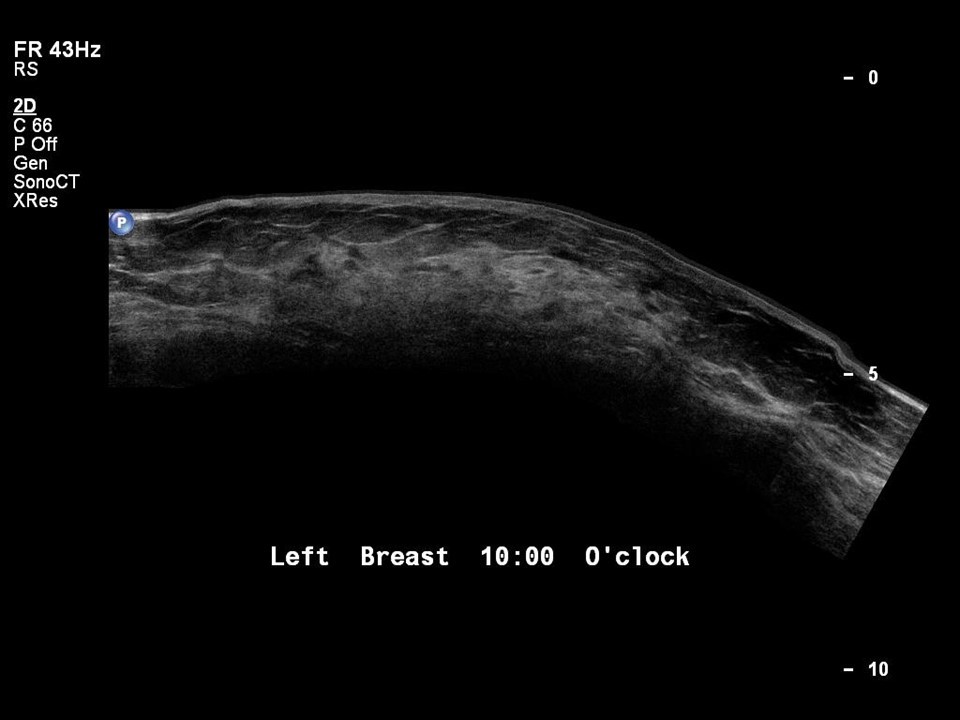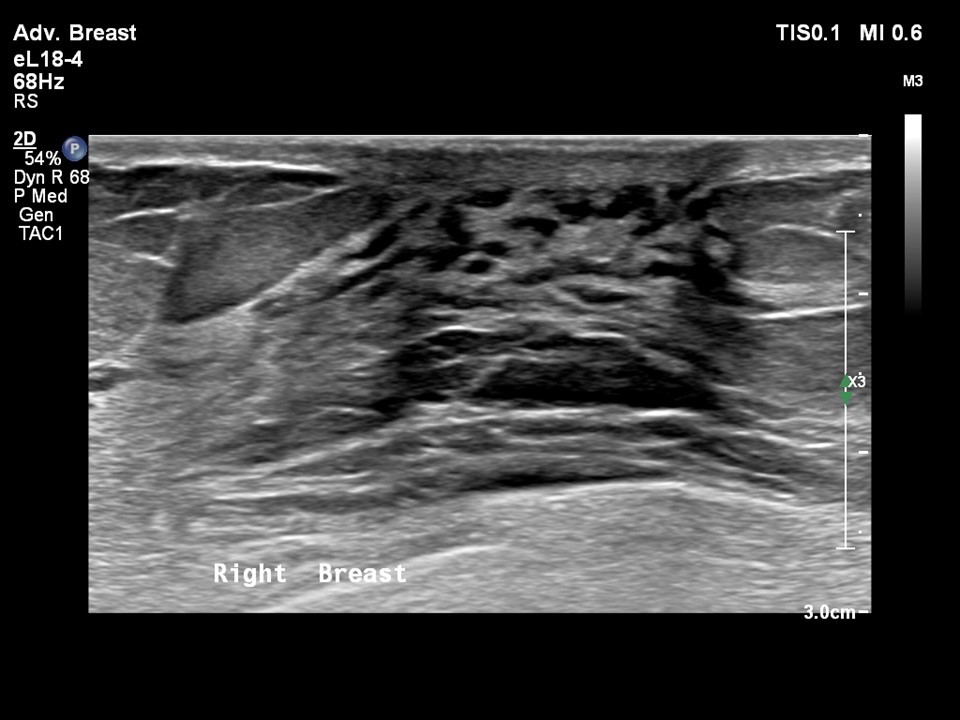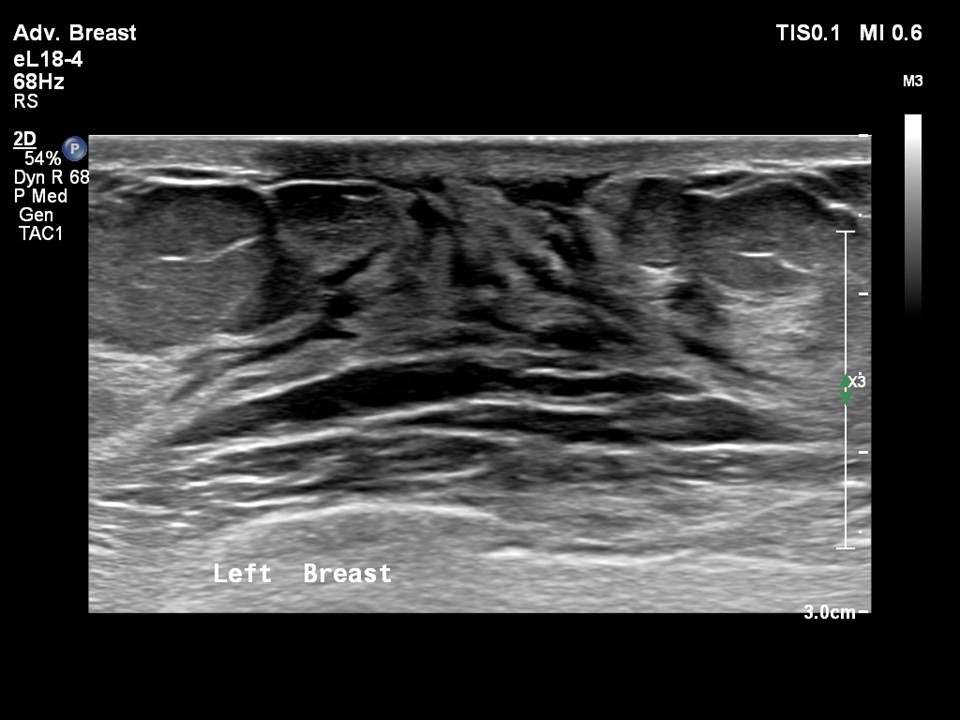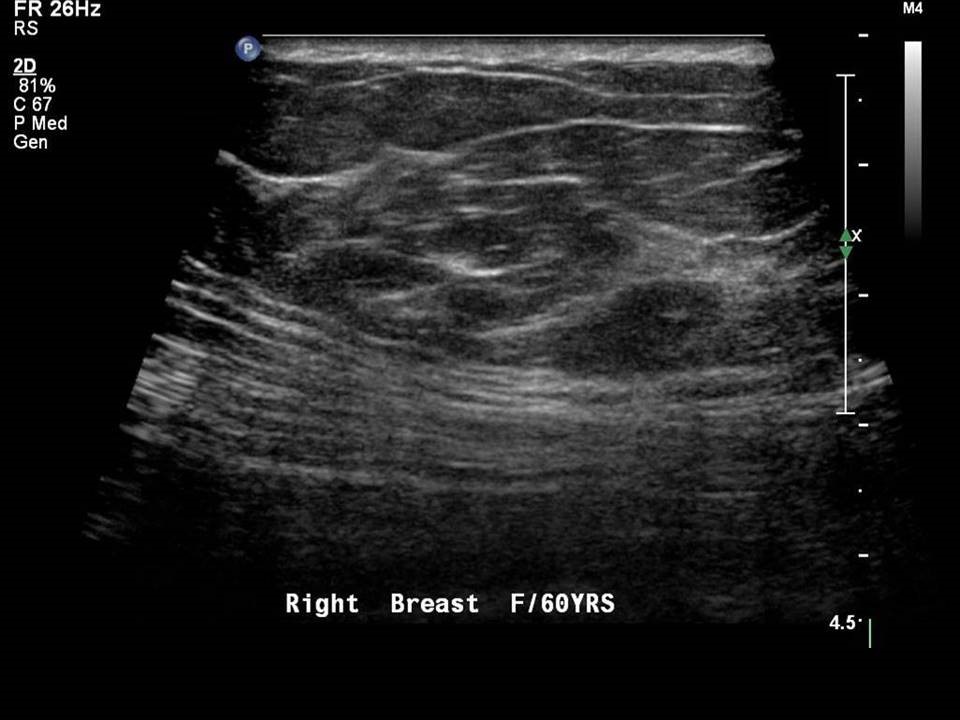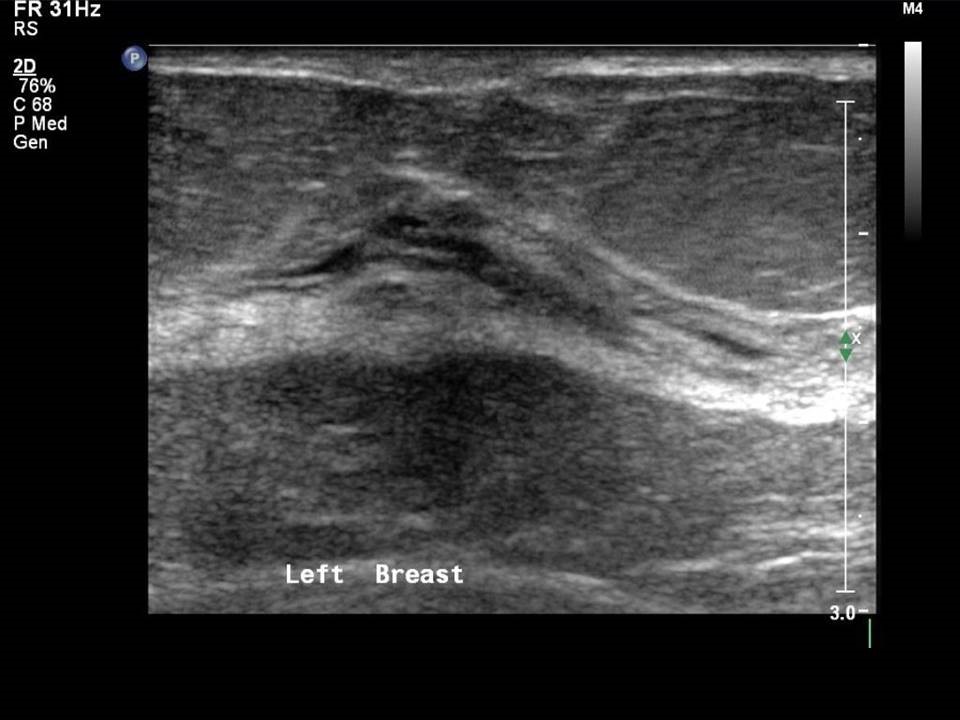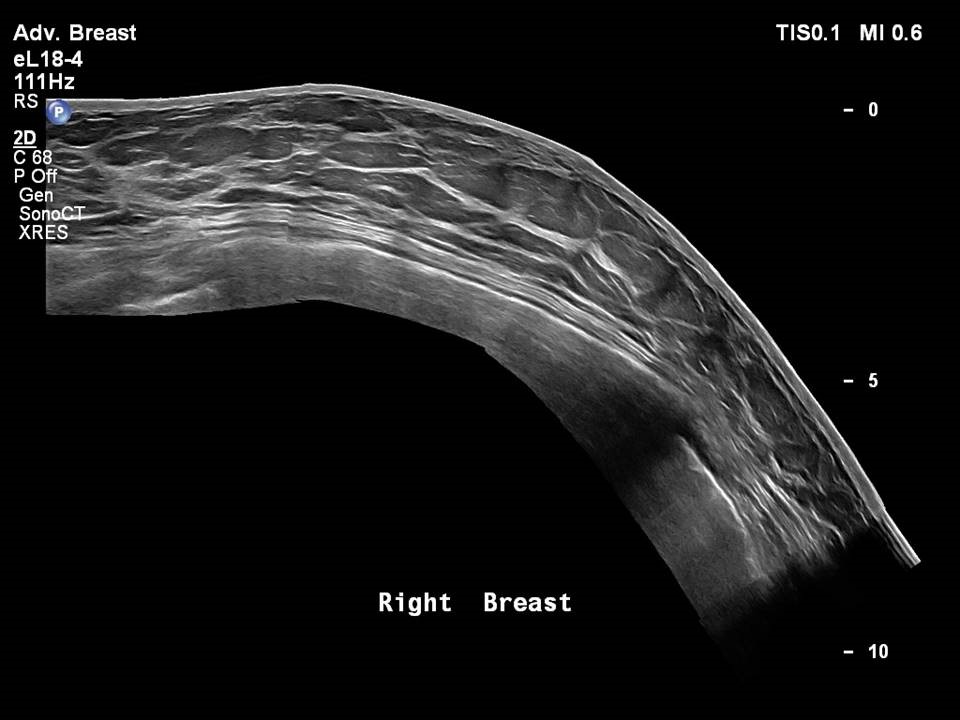Pregnancy
In the early weeks of pregnancy, there is marked ductal and lobular proliferation. On ultrasound, these changes are seen as proliferation of the glandular parenchyma in the mammary zone in the first trimester. As pregnancy advances, in the second trimester, further enlargement of the breasts with proliferation of the lobules and stromal and fat elements continues and in third trimester, alveoli get distended with colostrum. Ultrasound reveals these changes as increasing volume of glandular tissue in the mammary zone with increased echogenicity of the fibroglandular parenchyma. Prominent ducts are seen within the heterogeneous para-areolar fibroglandular parenchyma.
Lactating breast
On ultrasound, lactation changes are seen as dilated ducts with fine echoes within them. There is a greater volume of fibroglandular parenchyma in the mammary zone. The physiological changes related to pregnancy and lactation are transient, and the breast parenchyma reverts to its normal physiological appearance when lactation ceases.
Perimenopausal breast
Breast involution in the perimenopause is commonly seen as fibrocystic changes. These fibrocystic changes begin in women aged about 35 years, which is much earlier than physiological menopause. Ultrasound reveals heterogeneous parenchymal echotexture with glandular tissue of dense echogenicity in the para-areolar and retroareolar regions of the breast. Occasional changes of cyst formation and ectatic ducts (blocked and widened ducts with thickened walls) are seen on ultrasound. These naturally regress until breast involution is complete and there is no further hormonal influence on the breast parenchyma.
Involuting breast – fibrocystic changes
Fibrocystic changes with simple cysts, ectatic ducts, and mammary zone appears echogenic/hyperechoic
Ectatic ducts in involuting breasts
Postmenopausal breasts
Postmenopausal breasts show homogeneous fatty parenchyma. Involution of the glandular parenchyma is seen in the form of almost entirely fatty breasts with predominantly fatty premammary and retromammary zones and a small proportion of glandular tissue with atrophic ducts and stroma in the mammary zone.
| .png)





